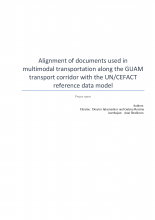
Alignment of documents used in multimodal transportation along the GUAM transport corridor with the UN/CEFACT reference data model
The objective of this project is further development of the digital transport documents that could provide seamless information flows accompanying cargo flows between countries along the GUAM transport corridor. Due to its position in the middle of the cargo transport routes between Europe and Asia, the use of UN/CEFACT standards and recommendations for cargo information sharing along this route makes much sense.
The focus of the project is on the practical application of the data models and standards to facilitate real-world transport operations that take place along this transport route. This is achieved by creating digital twins of real business documents that are mapped to the UN/CEFACT multimodal transport reference data model (MMT RDM) to ensure interoperability both in terms of changing jurisdictions and modes of transport along the route.
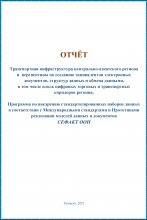
CA Transport Infrastructure and Perspectives on Development of Electronic Document Equivalents, Data Structures and Data Exchange
This Report serves as a preparation to the research of trade and transport corridors going though the Central Asia and establishes the necessity of digitalization of multimodal transport data as well as exchange of documents along those corridors through the use of UN & UN/CEFACT standards.
This Project is the joint initiative of the UNECE and the Ministry of Transport of the Republic of Uzbekistan.
The relevance of this project is the current common interest of all the countries in the region to jointly develop the transport links.
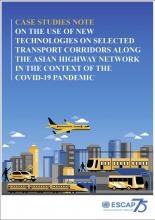
Seamless and smart connectivity along the Asian Highway network in the time of COVID-19
Freight transport operations poses the risks during the pandemics, especially if it is not fully computerized. As documents and goods continue to be subjected to physical checks for customs and other regulatory purposes, crew members and staff at border-crossing points and control terminals are exposed to the risk of contagion by the nature of their work. in this context, the use of information and communication technologies (ICT) and intelligent transport systems (ITS) is directly relevant to the pandemic response and recovery policies.Optimization of automation and digitalization can reduce the need for human interaction, making cross-borders transport safer and more resilient to disruptions. In this context, this technical note aims to offer policy recommendations for policy responses using new technologies and smart road solutions to preserve the regional transport connectivity in the time of the pandemics and other similar disruptions.
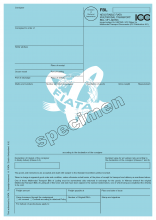
FIATA eFBL Standard Package
The FIATA eFBL Standard Package was developed as part of the United Nations response to the challenges of the COVID-19 pandemic under the United Nations multiagency project “Transport and Trade Connectivity in the Age of Pandemics: UN solutions for contactless, seamless and collaborative transport and trade”.
Available via FIATA’s GitHub repository, the data standard is offered as open source for all software providers and industry stakeholders to implement. FIATA expects its standard to become the main global standard for all House Bill of Ladings, noting the compatibility with other BLs.
Training Manual on Logistics Information System
The “Training Manual on Logistics Information System” was developed as part of the activities of the UNDA project “Transport and trade connectivity in the age of pandemics: Contactless, seamless and collaborative UN solutions”.
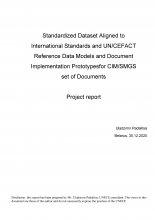
Standardized Dataset Aligned to International Standards and UN/CEFACT Reference Data Models and Document Implementation Prototypes for CIM/SMGS set of Documents
This pilot project was initiated in the context of implementing the recommendations of the 2019 and 2020 UNECE “Odessa seminars” to support the development of digital multimodal transport corridors, to increase the harmonization and standardization of data exchange in international transport, trade and logistics, to encourage electronic data exchange and thereby to reduce person-to-person contacts during the COVID-19 crisis and in the post-pandemic recovery, using relevant UN/CEFACT standards.
This included: an analysis of merchandise and information flows along the Black Sea – Baltic Sea corridor as background information for the further development of the project. A set of electronic messages (electronic document equivalents) based on the UN/CEFACT standards and Reference Data Models, using XML and JSON formats, has been developed in collaboration with relevant UN/CEFACT experts and using their guidance on how the UN/CEFACT standards should be applied to develop electronic document-equivalents for CIM/SMGS documents, in particular:
- Packing List;
- SMGS Consignment Note;
- CIM/SMGS Consignment Note (BY);
- CIM/SMGS Wagon List;
- Invoice for Customs (in cooperation with the Ukrainian consultant in the project).
A survey and analysis took place on what was necessary to accomplish for a complete conversion of data between maritime, road and railway transport. The focus was on new standards for generic document equivalents, in order to look into possibilities for their pilot implementation under the United Nations Development Account (UNDA) coronavirus (COVID-19) response project “Transport and Trade Connectivity in the Age of Pandemics”. The consultant worked in the areas of:
- practical aspects of preparing electronic standards for data exchange and new message structure subsets contextualized to the specific transport modes, using UN/CEFACT standards that would best service digital multimodal corridors and support modern technologies, including XML and JSON;
- development and implementation of a data model for the Black Sea – Baltic Sea digital corridor, combining the data for key documents accompanying goods, as described above, as identified in the project, and based on the UN/CEFACT Multimodal Transport Reference Data Model.
The main objective was to foster the harmonization of electronic data sharing, using global (UN/CEFACT) standards for transport, trade, and logistics, and to prepare templates for electronic document equivalents based on the UN/CEFACT semantic standards and reference data models.

Smart Railway Solutions for Trans-Asian Railway Network in the Times of COVID-19 Pandemic
To support trade and transport connectivity globally in times of pandemic the United Nation agencies have jointly launched a project titled- Trade and transport connectivity in times of pandemics: with overarching objective of developing contactless, seamless and collaborative solutions to preserve and further enhance the trade and transport connectivity. In Asia and the Pacific, ESCAP is leading the project and has initiated series of studies aimed at supporting countries in this direction.
The present study on smart railway solutions has been carried out under the project with aim to identify smart railway solutions that are proven to be successful elsewhere and are potentially replicable and scalable. Not all solutions would have equal importance or relevance for the railways of the region.
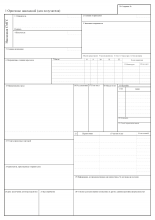
SMGS Consignment Note Standard Package
The SMGS Consignment Note Standard Package was developed as part of the United Nations response to the challenges of the COVID-19 pandemic under the United Nations multiagency project “Transport and Trade Connectivity in the Age of Pandemics: UN solutions for contactless, seamless and collaborative transport and trade”.
This electronic document equivalent Standard Package consists of the following elements:

Dnieper – Danube Corridor Pilot Dataset Alignment to International Standards and Data Models and Documents Implementation Prototypes for Use in Eastern Europe
Fulfilling the recommendations of the 2019 and 2020 UNECE “Odessa” seminars to support the development of digital multimodal transport corridors, with a view to increasing the harmonization and standardization of data exchange in international transport, trade and logistics to encourage electronic data exchange and thereby to reduce person-to-person contacts during the COVID-19 crisis and in the post-pandemic recovery, using relevant UN/CEFACT standards, a pilot project under the overall UN Development Account project “Transport and Trade Connectivity in the Age of Pandemic: United Nations solutions for contactless, seamless and collaborative transport and trade produced the following results:
- Analysis of data and documents transported via the Dnieper – Danube route (as a pilot implementation project);
- Development of electronic document equivalents for Inland Water Transport using DAVID forms (developed by the EU Strategy for the Danube Region, Priority Areas 1a and 11, in a cooperation that has been going on since 2013);
- Analysis of the feasibility of using API in this corridor;
- Test for interoperability.
The aim is to foster the harmonization of electronic data sharing using global (UN/CEFACT) standards for transport, trade and logistics, and to prepare standards for e-documents based on the UN/CEFACT semantic standards and reference data models. The focus will be on the development of electronic document equivalents for the documents mentioned above, using UN/CEFACT tools in the countries developing a digital multimodal transport corridor.
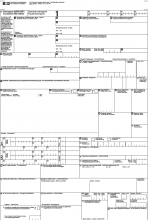
CIM/SMGS Consignment Note Standard Package
The CIM/SMGS Consignment Note Standard Package was developed as part of the United Nations response to the challenges of the COVID-19 pandemic under the United Nations multiagency project “Transport and Trade Connectivity in the Age of Pandemics: UN solutions for contactless, seamless and collaborative transport and trade”.
This electronic document equivalent Standard Package consists of the following elements: